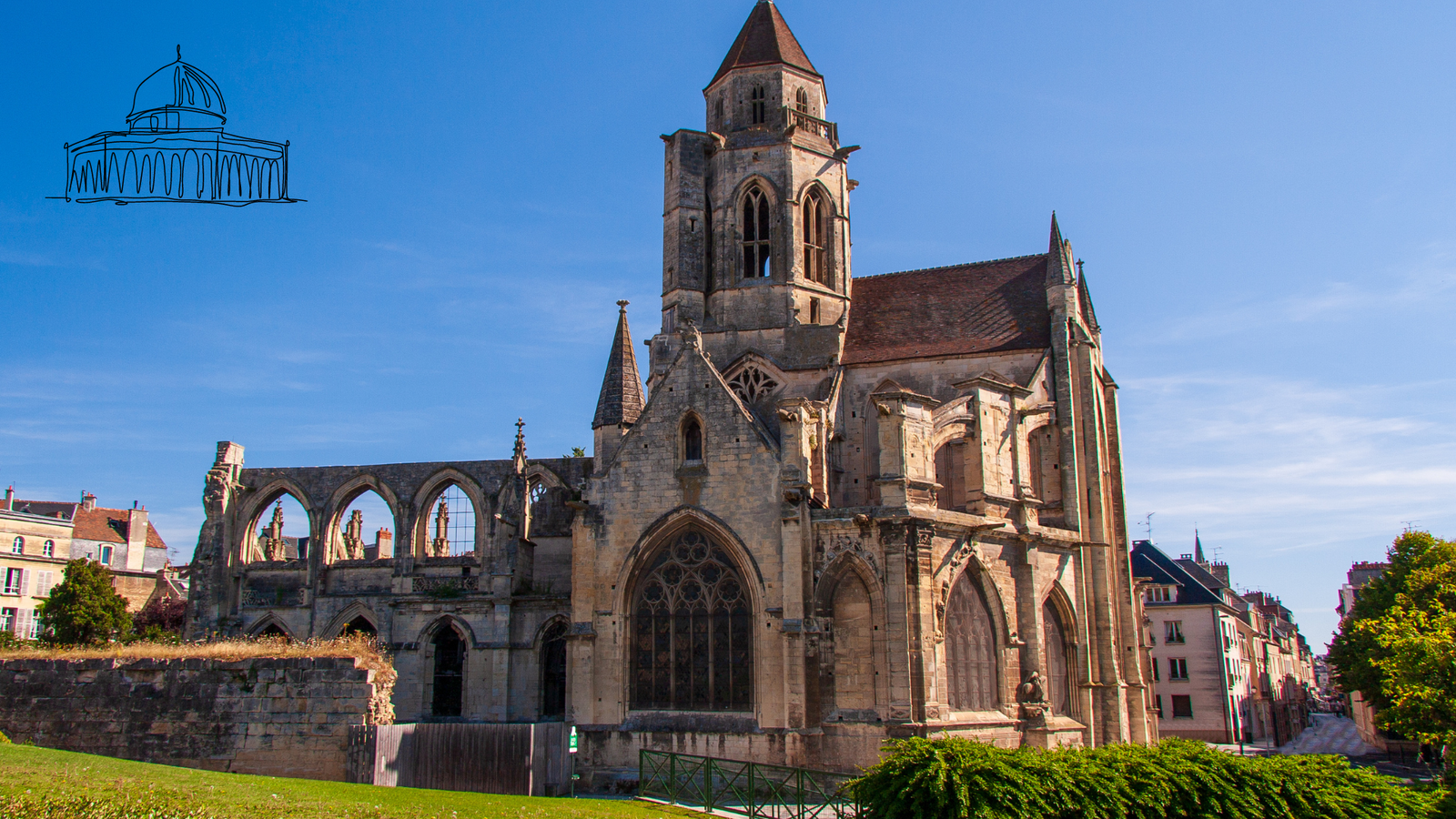The Church of Saint-Étienne-le-Vieux, located in the historic city of Caen in Normandy, France, stands as a poignant reminder of the city’s rich medieval past and the devastating impacts of war. Though today it remains a partly ruined structure, the church’s history is both fascinating and reflective of the tumultuous events that shaped Caen over the centuries. Let’s explore the church’s origins, its role throughout the Middle Ages, and the lasting scars left by World War II.
The Origins: Norman Beginnings
The Church of Saint-Étienne-le-Vieux, also known as Old Saint Stephen’s Church, was likely founded during the 10th century, coinciding with Caen’s expansion as a significant urban center. First mentioned in historical records in 1067, the church served as an important place of worship in the city’s early years. It became known as “Old” Saint Stephen’s to differentiate it from the newer Abbaye aux Hommes (Abbey of Saint-Étienne), which William the Conqueror had begun constructing around the same time.
The original church was built in the Romanesque style, characterized by its sturdy stone construction and rounded arches, but much of its structure was modified in later centuries as the church endured and recovered from a series of destructive events.
Destruction and Reconstruction: The Hundred Years’ War
During the Hundred Years’ War, Caen, a strategic city in the conflicts between England and France, suffered heavily. The Church of Saint-Étienne-le-Vieux was severely damaged twice, once during the English siege of 1346 and again in 1417. The church was largely rebuilt following these attacks, and it was during this period that the building gained its distinctive Gothic architecture, particularly the octagonal lantern tower, which still stands today.
Despite the challenges of rebuilding after war, the church’s architectural transformation over the next several centuries resulted in a blend of styles, most notably Gothic, which is evident in the pointed arches and the tall, delicate features that contrast with its original Romanesque design.
From Religious Hub to Ruins: The French Revolution and Beyond
The church’s role shifted dramatically during the French Revolution. Like many religious institutions of the time, Saint-Étienne-le-Vieux was decommissioned in 1793. For much of the 19th century, it was repurposed, serving first as a stable for revolutionary troops and later as a warehouse. The decline in the church’s physical condition led to its closure in 1844, and it was nearly demolished in the mid-19th century. Fortunately, the structure was saved from destruction thanks to the intervention of Arcisse de Caumont, a French historian and architect.
Despite being recognized as a monument historique in 1903, the church continued to suffer from neglect, with little maintenance carried out to preserve its fragile state.
World War II: Devastation by Allied Bombing
The final blow to the Church of Saint-Étienne-le-Vieux came during World War II, when the city of Caen became a central battleground during the Battle of Normandy. In July 1944, as Allied forces sought to liberate the region from Nazi occupation, the church was accidentally struck by shells during an attempt to destroy a column of German tanks stationed nearby. The bombardments severely damaged the nave and parts of the structure, leaving much of the church in ruins. Since then, it has remained in a state of disrepair, and the site has not been restored or reopened to the public.
A Testament to History: The Church Today
Although the Church of Saint-Étienne-le-Vieux is no longer an active place of worship, it stands as a symbol of resilience and a testament to the region’s long and turbulent history. Today, the ruined structure is part of the historical fabric of Caen, located near the ramparts of the city and close to the famous Abbaye aux Hommes. The church’s north aisle, transept, and the crossing tower still remain, offering visitors a glimpse into the grandeur of its past.
The site is now a popular destination for visitors interested in medieval history and the architectural evolution of Caen. The ruins, though off-limits due to safety concerns, continue to inspire admiration and curiosity for those passing through the city’s old streets.
Conclusion: A Legacy of Conflict and Beauty
The Church of Saint-Étienne-le-Vieux represents not only the architectural styles of the Romanesque and Gothic periods but also the resilience of Caen through centuries of conflict. From its initial construction in the 10th century to its near-destruction in World War II, the church has witnessed the rise and fall of empires, the ravages of war, and the transformation of France itself. Although it remains in ruins, it stands as a poignant reminder of the past, a monument to the endurance of history and the ever-present scars of war.
For visitors to Caen, Saint-Étienne-le-Vieux offers a unique opportunity to connect with the city’s heritage, even as it crumbles, a silent witness to the march of time.

